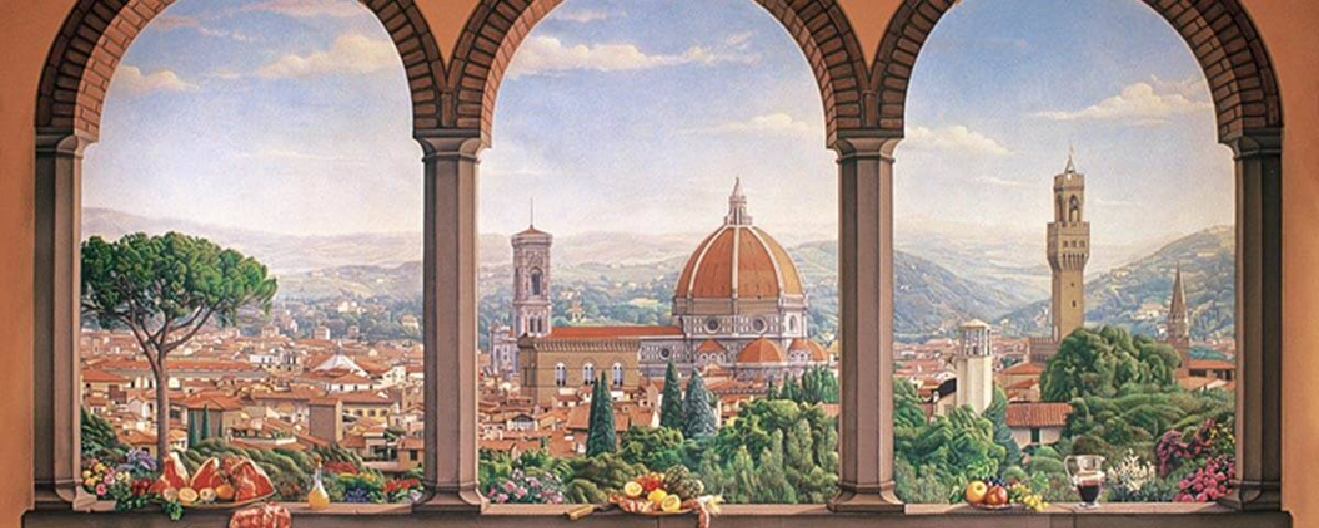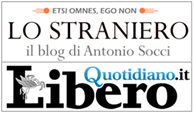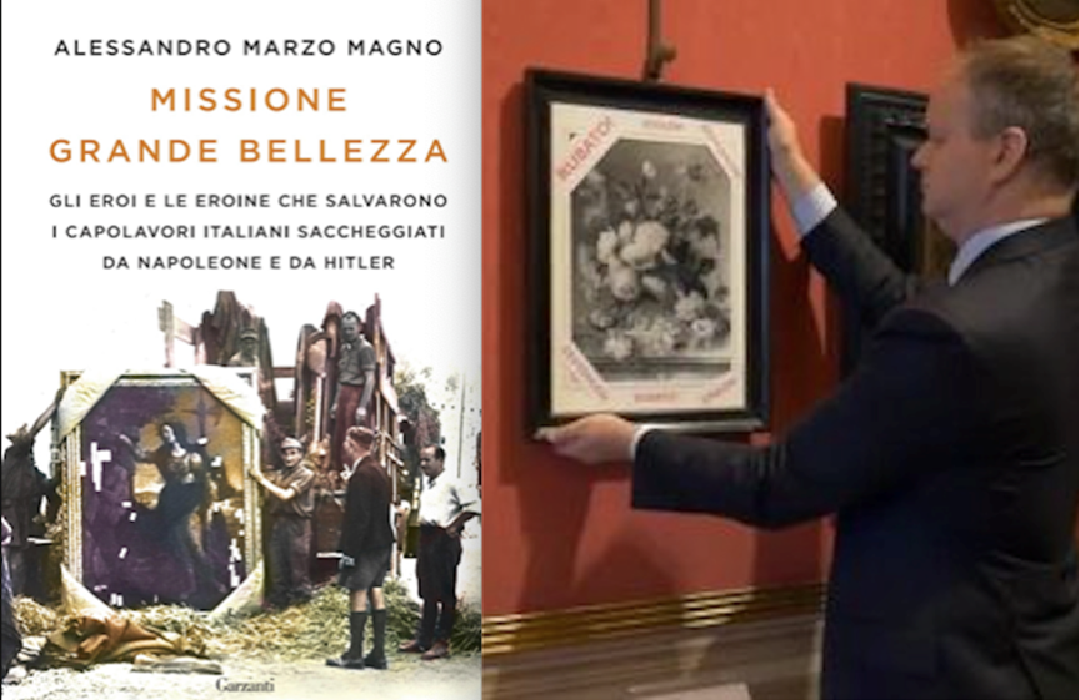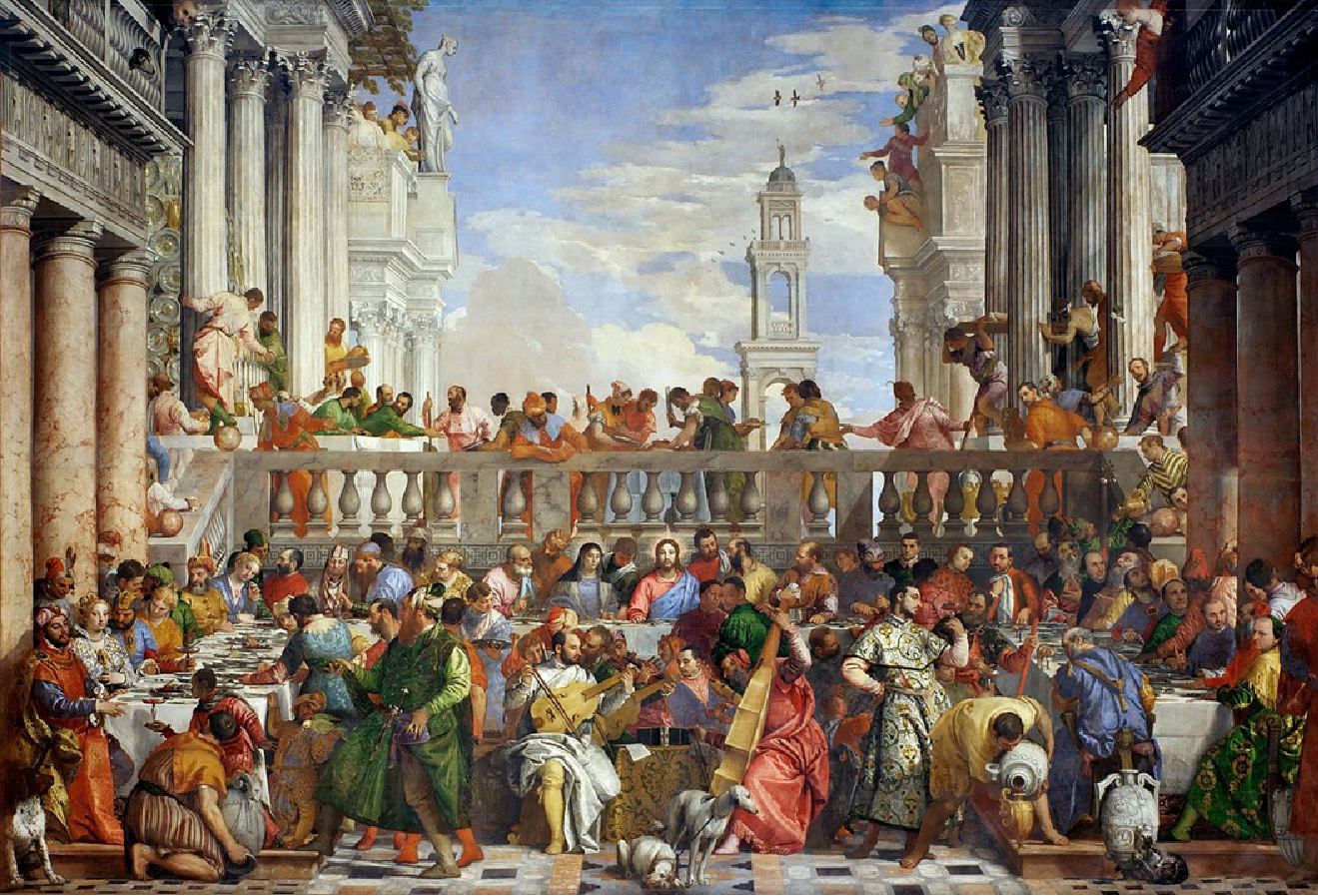 Anyone who follows Antonio Socci's work will know that is abiding interest in the life of the Church is matched by an equally passionate patriotism and concern for Italy's status in the world and her great history and culture...
Italy is waking up:
Anyone who follows Antonio Socci's work will know that is abiding interest in the life of the Church is matched by an equally passionate patriotism and concern for Italy's status in the world and her great history and culture...
Italy is waking up:
Let us recover art treasures taken away by past conquerors
They represent the beauty found in our history and identity
Translated from

January 10, 2019
Though it still seems incredible, Italy – whose artistic patrimony had been sacked especially by French and German conquerors (but not only they) – is lifting its head again with pride. Finally, Rome is concerned about how to bring back what belongs to Italy.
The wise German director of Florence’s Uffizi Museums, Eike Schmidt, raised ascandalized eyebrows when he said recently that her country, Germany, should return Jan van Huysum’s famous ‘Vase of flowers’ which belonged to the collection of the Palazzo Pitti also in Florence, and was among those depredated by Nazi soldiers during the German occupation of Italy in 1943-1945. Some said she did it to ingratiate herself with the new Italian government. But surely, she did it because she has sensed that things have changed.
Last November 25, I wrote here in
Libero about the colossal looting of Italian art treasures by French and Italian conquerors, but at the time it was still a taboo subject in Italy. Especially in these years of euro-fanaticism, in which it was thought necessary for Italy to prostrate herself to the European Union. So even merely hypothesizing on the return of looted art exposed one to the accusation of truculent souverainism and blind nationalism.
But since the demand was made by Schmidt who is German, the Euro-fanatics were taken aback. In fact, he also said that “Germany should abolish its regulations about foreign works of art obtained during a war in order to enable these works to be returned to their legitimate owners”. Adding that in the specific case of the painting he wants returned, “Germany has a moral duty to return this work to our museum, and I hope the German state can do it as soon as possible”.
Salvatore Giannella, in his book
Operazione salvataggio (Operation Salvage)(Chiarelettere), tells us that the call should include
at least 1653 works of art looted in 1943-1945 (800 paintings plus dozens of sculptures, musical instruments including precious Stradivarius violins, and hundreds of historical ad literary manuscripts).
But the move of the Uffizzi director simply anticipated an initiatve by the new government, The Minister for Cultural Heritage and Activities, Alberto Bonisoli, called a meeting yesterday to discuss the problem of Italian works of art that were depredated (in various times and for various reasons) and are now in foreign museums. Let us hope this is a turning point.
However, one is disconcerted by a cultural problem on the national conscience:
Why does it seem that Italians themselves are totally unaware of what has happened? [Perhaps because what remains in Italy is mind-bogglingly vast!] Neither in schoools or in the media has attention been given to this tragic and fundamental chapter of our history. And yet, the looting and resulting loss to us have harmed not just the artisitic patrimony of our major cities, but also our identity – the soul of our people.
That is why we welcome a new book by one of the few intellectuals who has occupied himself with the problem and has uncovered the whole story: Alessandro Marzo Magno’s
Missione Grande Bellezza: Gli eroi e le eroine che salvarono i capolavori italiani saccheggiati da Napoleone e da Hitler (Mission 'Great Beauty': The heroes and heroines: The heroes and heroines who saved the Italian masterworks looted by Napoleon and Hitler)(Garzanti).

It is an extraordinary book, heartbreaking and tragic in its meticulous reconstruction of the immense lost patrimony representing our history and identity, which was not just looted, but many of which were destroyed, devastated, dispersed.
Marzo Magno’s book should be read in all Itaian schools. It also makes us reflect on how, in the course of centuries, French and Germans (represented in this case by Napoleon and Hitler) have thought about how to unify the continent by conquest – to place all other European peoples under their governance.
Italy was always considered as a land to conquer, being a unique treasure chest of art and beauty, and therefore a target for pillage. But it is striking that a great part of Italian culture and politics have been silent all these years about this fact.
If we wish to find someone who has raised the question recently of restituting stolen Italian art to Italy , we must look abroad.
A singular case is Paolo Veronese’s huge and marvelous painting from 1563,
The Wedding Feast in Cana, which was taken by the French from the Church of San Giorgio Maggiore, in Venice, and installed in the Louvre, where it still is. It was just one of the masterpieces looted during the pillage of Venice by Napoleon’s troops. ATtalmost 7 meters by 9 meters, it is the largest painting in the Louvre.

Many years ago, someone publicly raised the appeal for its restitution to Italy, but it was not an Italian. Marzo Magno reconstructs the episode: A Parisian lawyer, Arno Klarfeld, wrote in
Corriere della Sera, on February 1, 1994, that France should return the Veronese masterpiece to the place where it was painted, Venice. Klarfeld wrote: “The Louvre is harboring the greatest artistic robbery committed in the name of the Republic… Nothing justifies the presence of ‘The Wedding Feast in Cana’ in the Louvre – no juridical or artistic considerations whatsoever".
Klarfeld took up his call in the French newspaper
Liberation: “Should the Veronese masterpiece be returned to Venice? Yes. Because Veronese’s painting, the largest in the world, is no longer where it should be – in the Refectory of the church of San Girfgio Maggiore. A hall designed by the most important architect of the Rebnaissance, Andrea Palladio, precisely to house Veronese’s painting… The setting itself is a jewel… France is not the painting’s owner, and is not entitled to it at all”.
Marzo Magno recalls that Klarfeld, when he launched his campaign, did so alongside his Italian fiance, Carla Bruni, who said at the time: “My commitment to recover The Marriage at Cana, after Arno explained the situation to me, is more than just normal, but logical”.
But then, Marzio Magno notes, “as we know, things went otherwise. Bruni did not become Mrs. Klarsfeld, but rather the wife of French Presdient Nicolas Sarkozy… And after that initial flurry more than 20 years ago, neither Klarsfeld nor Bruni have spoken again of returning the Veronese to Venice."
And yet, the total number of works to be recovered is immense. It wasn’t just the looting of paintings, statues and manuscripts. So many things were destroyed and lost forever such as the Lombard Gothic cathedral of San Pietro in Alessandria, which the French demolished in 1803 to make way for a parade ground.
Then there are those works that disappeared and no one knows where they are. Marzo Magno recalls, for instance, that in Venice “during the Napoleonic conquest, the musical archive of the Pio Ospedale della Pieta disappeared. This included
copies of all the scores written by Antonio Vivaldi, who had been its violin master for 17 years. No one knows what became of these – they were either destroyed or lost”.
In any case, it is more probable that they have been lost, because if such an important collection of documents had been destroyed, it would have been reported. Imagine if, one day, we could recover Vivaldi’s scores of compositions we know he did – for example, an oratorio on Moses, or concerts dedicated to the various European countries, including France and Germany – but which have disappeared!
There is a symbolic value here: While an Italian master dedicated his sublime music to France and Germany, these are the countries that, in modern times, have invaded Italy to loot and pillage.
So whenever we say ‘Europe’, we must remember this story which teaches us many things, even today.